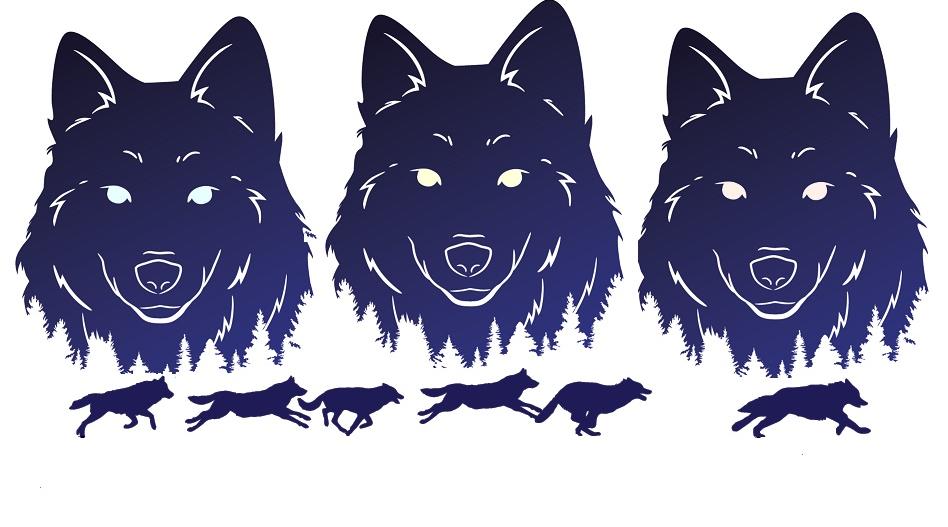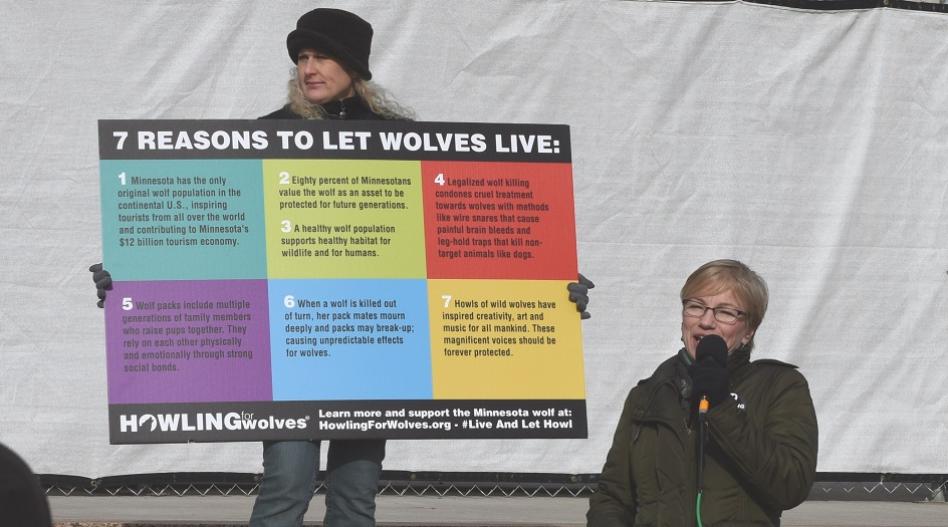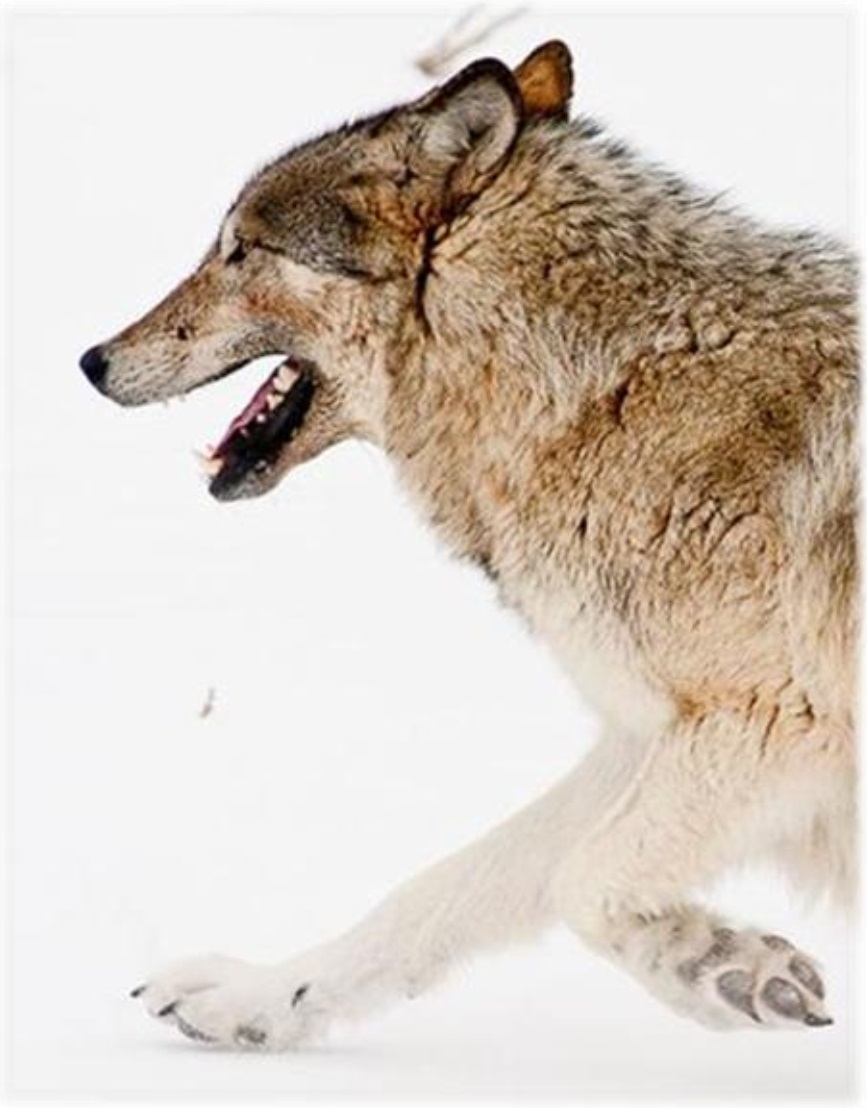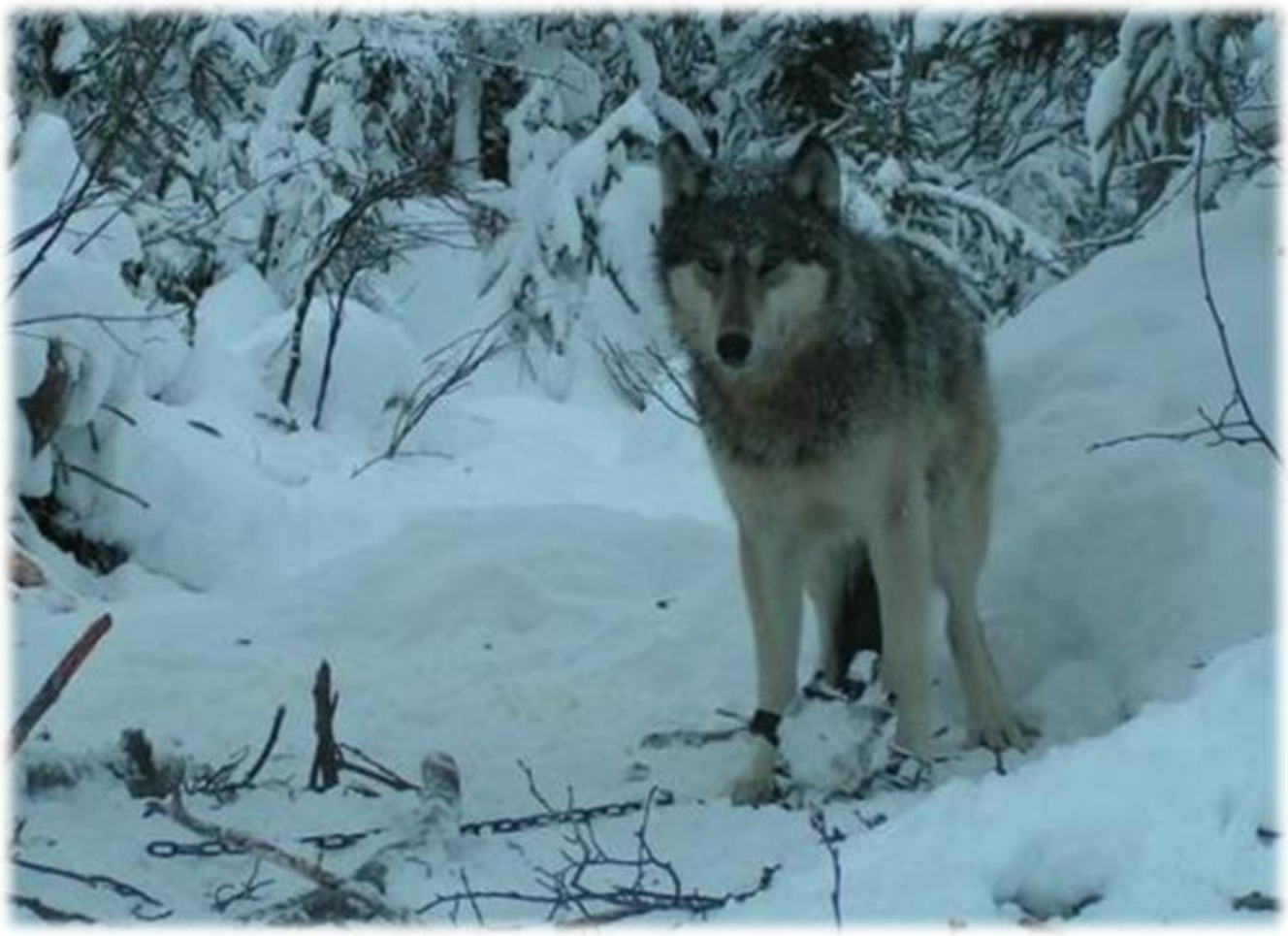THE GRAY WOLF
The gray wolf or canis lupus, also called the timber wolf, is considered a pure wolf as distinct from wolf-coyote hybrids or canis latrans. Wolves are pack animals that live in small groupings formed mostly by family members. The alpha male and alpha female are the only members to have pups and the entire pack raises the pups. Occasionally, a second female will have a litter "with permission" of the alpha female. More than half of newborn wolf pups will die by 6 months of age.
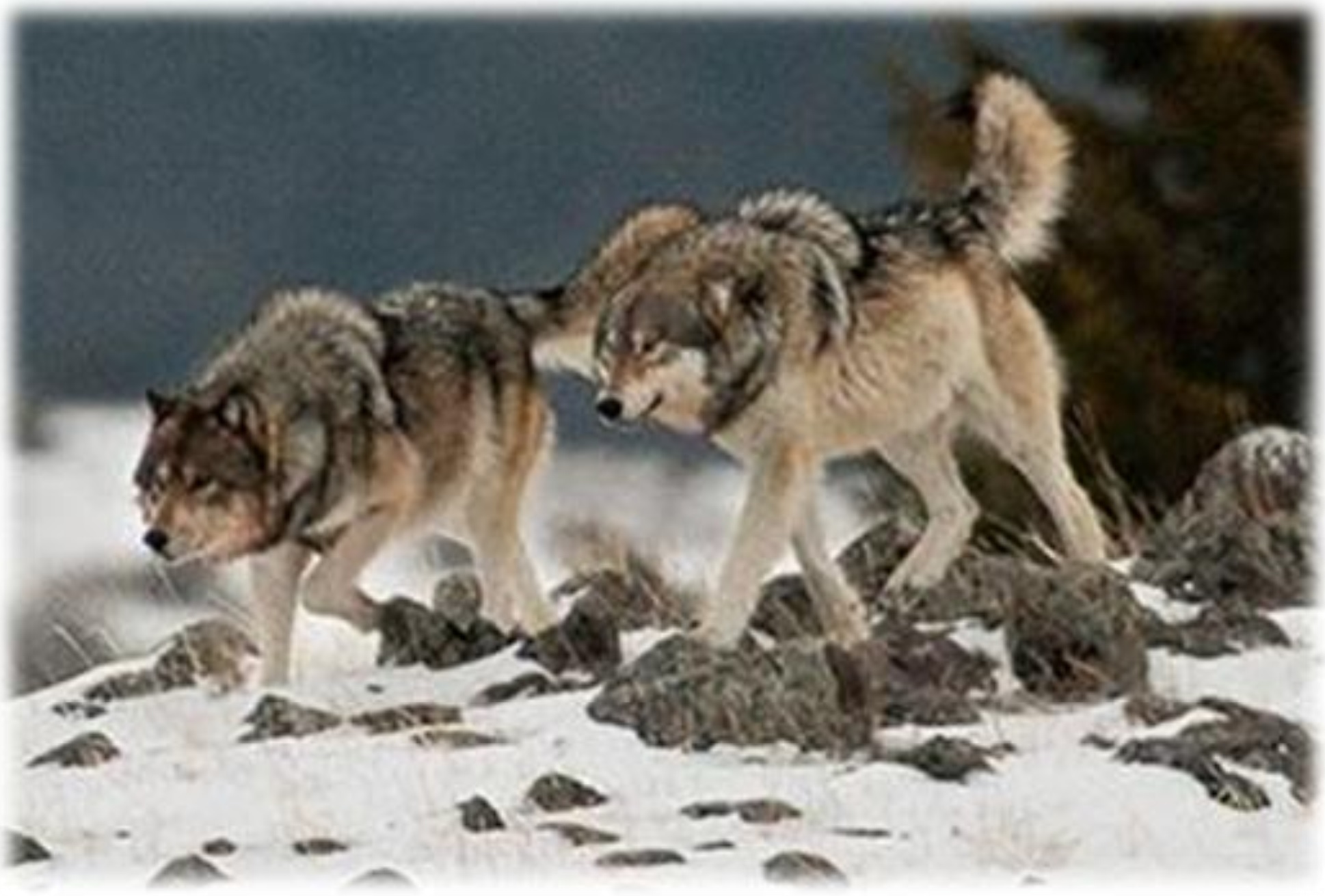
If a litter of pups is orphaned by its pack due to their death, then another pack will raise them. Wolves do not kill wolf pups; they adopt them. The pack size is dependent on the amount of food available to them and the size of their territory. Wolves control their own numbers in that they protect their territories and will kill non-pack members that threaten the pack or move into their territory. This means that when wolf numbers increase beyond what their habitat is able to support, the population is maintained by an increase in wolf-on-wolf kills. As hunters, wolves select the least productive animal of a group, the very young and very old or sick. The lead hunter (usually alphas) selects the animal and starts the pursuit; the remaining pack piles on until it is brought down. Once an animal is selected and the chase ensues, the pack does not aiver or move to a different animal. If they are unsuccessful, the pursuit stops.

